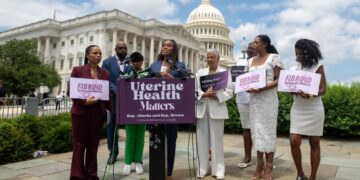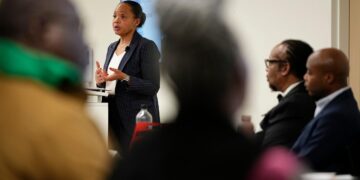Feb 20, 2025 Story by: Editor
Over the last 40 years, global discussions have increasingly focused on well-being and how governments can enhance the quality of life for their populations. In 2015, the United Nations (UN) formalized these conversations by launching its 2030 Sustainable Development Agenda, which includes 17 Sustainable Development Goals. Similarly, the United States has integrated well-being into its national priorities through the Healthy People 2030 Goals. As a result, well-being has become a key aspect of public policy and government spending both domestically and internationally.
The U.S. is a highly diverse country, yet disparities in health and well-being remain stark. A well-documented reality is that factors such as zip code, income, and race significantly influence health and overall well-being. Black, Latino, and Native American populations generally experience poorer health outcomes than their white counterparts, with Black men facing some of the most severe challenges. However, certain regions show improved economic and health outcomes for Black men, offering valuable insights into how well-being can be fostered through supportive environments.
Black men tend to live longer and experience higher social mobility in areas with lower poverty, better employment opportunities, greater educational achievement, less racial discrimination, and strong community support—especially from fathers. These regions, often located near large employers like military bases or public sector jobs, are typically more racially diverse than areas with lower economic mobility and higher mortality rates for Black men. Notable examples include Montgomery County, Maryland, and Cochise County, Arizona, where conditions contribute to the well-being of Black boys and men.
Despite the increasing focus on well-being, discussions often overlook communities of color, leaving a gap in policy-making and public budgeting. While available data shed light on environments that support Black boys and men, the Brookings Race, Prosperity, and Inclusion (RPI) team has taken a direct approach by engaging with communities to understand their perspectives on well-being. The Wellness in Black Life (#WIBL) initiative encourages dialogue about the well-being of Black boys and men and promotes community participation in shaping public policies. Ongoing discussions are taking place in cities such as Little Rock, Arkansas, Montgomery County, Maryland, and Baltimore, Maryland.
So, what are these conversations revealing? Community members stress the importance of considering Black male well-being across different life stages and ensuring strong support systems during transitions. Many Black boys and men express feelings of isolation, emphasizing the critical role of social connections and the need for safe spaces where they can gather informally.
For Black boys, social networks formed within and around schools play a vital role in fostering emotional, physical, and social well-being from childhood into adulthood. Prior research has shown that strong social networks contribute to better economic outcomes, aligning with community feedback on the significance of schools and peer relationships. Many individuals have shared that feeling heard, acknowledged, and supported in school shaped their development, happiness, and sense of potential during childhood.
While several programs aim to help Black boys navigate school environments that can be unwelcoming or even hostile, fewer initiatives focus on influencing public policy to enhance their well-being. Community discussions highlight barriers such as segregation, discrimination, and limited access to extracurricular activities, which hinder efforts to prioritize Black boys’ well-being. Additionally, Black boys, men, and their communities have had minimal opportunities to contribute to data collection or participate in evidence-based policymaking related to education, employment, and health.
These conversations have inspired community members to develop their own public policy agendas centered on Black boys’ well-being. As these initiatives take shape, it is evident that community members seek to engage government officials on issues such as mental health resources, transportation, and public safety. Ensuring that their voices are heard is crucial to developing policies that enable Black boys to experience childhood with hope, feel valued in schools and community spaces, and build meaningful relationships with peers and mentors. Communities are defining well-being in their own terms and shaping policies that reflect their vision. Initiatives led by local voices highlight the distinct needs of various communities and reinforce the importance of including diverse perspectives in shaping health and well-being policies.
Source: Brookings
















